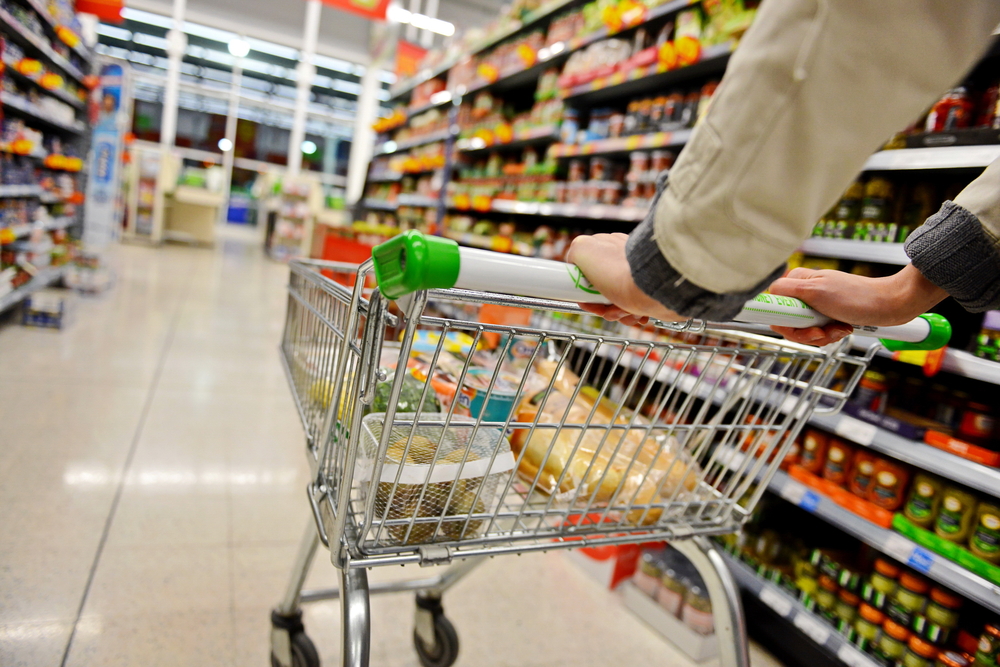Wherever you’re reading this, it’s likely you’ve experienced quite a bit of change in the last weeks and months. The current coronavirus pandemic has turned things upside-down, creating havoc with the global economy and rupturing the routines of entire populations. As most of us are confined to the limits of our homes, our habits have undergone something of a rapid transformation. Alongside how we work, exercise, and socialise, how we shop for food has changed significantly in a very short amount of time. In this post, we’ll take a country-by-country look at how our food shopping habits have changed during this pandemic, and what we can learn from them going forward.
UK
In the UK, shoppers are visiting supermarkets less frequently but buying more when they do. These ‘big shops’ are consistent with the UK government’s advice to reduce all but the most essential travel outside of the home.
According to transactional data collected by Revolut, one of the UK’s leading ‘challenger banks’, sales in supermarkets increased on average by 6% between February and March whilst footfall in stores decreased by as much as 44%.
The largest ‘winners’ from these changing circumstances are, understandably, discount supermarkets and supermarkets with a strong online presence. The latest statistics from Kantar show that Lidl has experienced a 17.6% increase in sales in the past 12 weeks compared to the same period last year, whilst the exclusively-online supermarket, Ocado, has seen a jump of 12.5%.
Germany
The picture is similar in Germany, albeit with less of an emphasis on online grocery shopping.
The latest statistics we have show that sales in German supermarkets are up 48% for the period 9th February – 22nd March in comparison to a year ago. A significant portion of this upward drive has been through the sale of frozen and packaged foods; dried potato dumplings, for instance, experienced a 242% increase in sales versus last year, whilst ‘semi-finished’ foods jumped by 226%.
As with the UK, it’s likely that German shoppers are buying more with fewer visits to supermarkets; although there isn’t currently any transactional data to back this up, a recent study has found that footfall in German high-streets has decreased significantly during this period. Given that physical store locations are still preferred over online grocery shopping in Germany (due to a greater density of inner-city stores), we can deduce that Germans are spending more in stores in the fewer visits they take.
France
In France, shoppers have begun to diversify the ways in which they buy their food. Although online grocery sales account for just 10% of food buying in the country, the first two weeks of March 2020 saw this skyrocket; a 30.1% increase was registered in e-commerce grocery sales between 2nd March and 8th March. Every other shopping channel (convenience store, supermarket, and hypermarket) also experienced increases in revenue, but nowhere as high.
In terms of what shoppers are buying, the French are buying large quantities of flours, cooked pasta dishes, and ‘cooked French dishes’. Each of these sub-categories has seen increases in the last week of March well in excess of 150%.
Italy
Similarly to France, Italy is also changing the way it buys food. More and more people are shifting online to purchase their groceries, hailing a temporary move away from buying in store. Traditionally, Italy has had some of the lowest rates of e-commerce in Europe – in 2019 just 3.4% of all retail sales were made online.
With the current state of affairs, however, online grocery shopping has increased massively. Home delivery doubled in the first days of the lockdown, whilst the popularity of a ‘Click and Collect’ service trebled. Supermarket chain Carrefour have reported that their online customers have doubled since 9th March, and the number of customers using their rapid 30-minute home delivery service (in collaboration with Glovo) has increased ten-fold.
In terms of what Italian shoppers are actually buying, old habits die young; flour, prepared mixes for pizza bases, and packaged yeasts are the food products that saw the largest percentage increases at the end of March. Apart from any cultural factors, this may just reflect the fact that Italy is further along the ‘coronavirus timeline’, having largely passed the phase of panic buying packaged, long-life goods.
From a glance at the initial data, there seems to be one prevalent (and predictable) message: regardless of what shoppers are buying, they’re doing it increasingly online. Whilst this was already a trend before the COVID-19 pandemic, the current situation has given it a turbo-boost that’s likely to be felt well after lockdown measures have been eased.
This increase of online grocery shopping poses various challenges and opportunities for international food buyers. Chief among these is building more responsive supply lines with producers to match live demand from online shoppers. Another consideration is how to market foods online whilst providing a positive experience for the user.
Although these are issues for the future, supermarkets around Europe and indeed, the World, are learning some valuable lessons during this difficult period which will no doubt help them in the longer term.
If you’re currently sourcing any food products from Italy, get in touch with the Italian Food Experts. With decades of experience and an extensive network of small to medium sized producers in Italy, we can help you find whatever you’re looking for, and at no cost to you.

